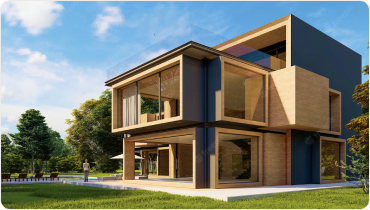Introduction to Interior Design
This article is your ultimate guide if you want to learn about interior design. It will teach you everything from interior design to mere once. You will also learn about the different styles of interior design and how to create a cohesive look in your home.
Basics of Interior Design
The following are a few key things to consider when considering the interior design to create a functional, comfortable space for everyday living. That means considering how you and your family use the space and any specific needs you may have. For example, if you have young children, you’ll want to ensure no sharp edges or dangerous areas are within reach.
Think about the space’s overall aesthetic. What do you want to create? Do you prefer a relaxed and cozy atmosphere or a more put-together and polished look? Once you have a general idea of the style, you can start narrowing down your furniture, decor, and color choices.
Finally, remember the little details! Even the smallest accents can make a big difference in the overall feel of a room. So take your time to select items that reflect your taste and style. With these basics in mind, you’re well on your way to creating a beautiful and welcoming space that’s your own.
Essential Elements of Interior Design
Interior design involves many elements, but some are more important than others. Here are some of the essential elements:
1. Space Planning: This is the process of determining how best to use the space in a room or home. It involves considering traffic flow, furniture placement, and storage needs.
2. Scale and Proportion: This refers to the relationship between different elements in a room. For example, you might have large windows and high ceilings, requiring larger furniture to balance everything out.
3. Color: This is one of the most important aspects of interior design. It can set the mood for a space and make it feel exciting or calming.
4. Light: Lighting is another important element of interior design. It can be used to create different atmospheres in a room, and it can also be used to highlight certain features or pieces of furniture.
5. Texture: Texture is important for visual and tactile interest in a room. Different textures can be achieved through fabric, stone, wood, glass, or metal.
Choosing Furniture and Decorations
When choosing furniture and decorations for your home, keep a few things in mind:
- First, you want to choose pieces that fit your style and taste.
- You want to make sure the pieces are comfortable and functional.
- Finally, you want to ensure the pieces work well with the overall design of your home.
To start, take a look at your style. What kind of furniture and decorations do you like? Do you prefer simple and clean lines or more ornate and detailed pieces? Do you like modern or traditional styles? Once you know your preferred style, start shopping for pieces that fit that description.
Next, consider comfort and function. Make sure the furniture you choose is comfortable to sit in and use daily. Also, make sure the pieces are functional for your needs.
Lastly, think about how the furniture and decorations will work with the overall design of your home. If you have a specific theme or color scheme, ensure the pieces you choose a complement that design. Also, keep in mind the scale of the room when selecting furniture. You want to leave a small space with enough furniture and decoration.
By following these tips, choosing furniture and decorations for your home will be a breeze.
Kitchen and Bathroom Design Tips
Regarding kitchen and bathroom design, there are a few things to keep in mind:
- Maximize the space. Use every inch of space available if you have a small kitchen or bathroom.
- Could you keep it simple? Stick to a basic color scheme, and don’t overcrowd the space with too much furniture or decor.
- Consider your needs.
Ensure your kitchen or bathroom layout is functional and that all the appliances and fixtures you need are included. Lastly, have fun! These spaces are meant to be enjoyed, so make them your own.
Click Here to find your ‘perfect property.’
Tips on How to Incorporate Color into Your Home
Interior design relies heavily on color. It can set the tone for the entire space and affect the mood of those who live there. For example, when used correctly, color can make a small space appear larger, a dull room brighter, and a boring room more interesting.
When incorporating color into your home, remember a few things. First, consider the mood you want to convey. For example, do you want a calm and relaxing space or prefer a more energetic environment? Then, the colors you choose should reflect this mood.
Next, take into account the natural light in the room. Sunlight can cause colors to appear brighter than they are, so be sure to test out paint samples in the space before making your final decision. And finally, don’t be afraid to experiment! Trying out different color combinations is part of the fun of decorating your home.
Lighting Basics in Interior Design
The importance of lighting in the interior design must be considered. It can create a mood, highlight features, and set the tone of a space. Many different types of lighting can be used in interior design, and choosing the right type for each space is an accent.
Ambient lighting is used to provide general illumination for a space. Task lighting provides focus, such as reading or cooking. Finally, accent lighting highlights specific features in a space.
Lighting a space can be done in many different ways. Natural light is the best way to light a space, but using it is only sometimes possible. Natural light can be supplemented or replaced with artificial lighting. There are many different types of artificial lighting, including incandescent bulbs, fluorescent bulbs, LED lights, and halogen lights.
It is important to consider the color of light when choosing artificial lighting. That is because different light colors can have different effects on a space. For example, warm colors such as yellow and orange will make a space feel warm and inviting, while cool colors such as blue and green will make a space feel calm and relaxing.
Finishing Touches
After you’ve chosen your furniture and completed your floor plan, it’s time to add the finishing touches to your home. These elements tie the whole room together and make it feel complete.
Start with a rug. Rugs can help define a space and add comfort and style. Choose a rug that complements your furniture and fits the size of your room.
Then, add some window treatments. Curtains or blinds will not only give you privacy, but they can also add color and pattern to a room. Finally, consider adding blackout curtains if you want to sleep in or block out light from outside.
Next, consider adding some decorative pillows or throws to your furniture. That is an easy way to add color and pattern to a room without making any permanent changes. Plus, it’s a great way to change your look when you’re bored with your current decor.
Finally, remember the details. Things like candles, vases, and knick-knacks can help personalize a space and make it feel like yours. However, be careful not to go overboard – too many trinkets can make a room feel cluttered and chaotic.
Conclusion
Our guide to interior design has given you some ideas and inspiration for your home. Whether you’ve just moved into a new house or are looking to give your existing space an update, with the right approach, decorating can be fun and rewarding. By following the tips in this article, you should have no problem creating a living space that is both aesthetically pleasing and functional. Now it’s time to get started!
Discover your dream home today with our expert real estate agents. Visit our website or call us to schedule a consultation and start your property search now!”
FAQs
1. How do I get started in interior design?
To get started in interior design, consider taking classes or earning a degree. Additionally, gaining real-world experience through internships or entry-level positions can help you develop the skills and knowledge necessary to succeed as a professional interior designer.
2. How do I make my home more valuable?
Making your home more valuable can be achieved by improving the property, such as renovating the kitchen or bathrooms, adding square footage through an addition, or landscaping the yard. Also, maintaining the home and keeping it in good condition can increase its overall value.
3. How do I make my home more marketable?
Making your home more marketable involves making it look as attractive as possible to potential buyers. That can be achieved by decluttering, deep cleaning, and staging the home to highlight its best features. Additionally, making small updates and repairs can make the home more marketable.


 Thank You
Thank You